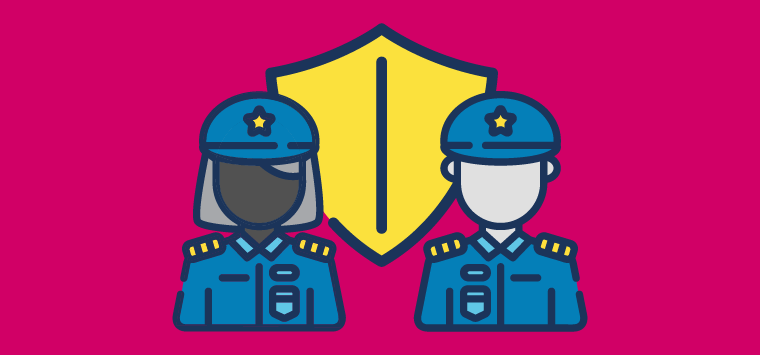Ensuring Security Officer Safety During Patrols
The pressing need from major companies, government organisations and small businesses to keep workers safe continues to drive the demand for private security. But while guards are tasked with protecting others, contractors must take active steps to ensure security officer safety, since the job often requires distributed workforces to patrol potentially dangerous areas.
As the number of people in urban areas grows, more banks, nonprofit organisations and other businesses will likely spring up to serve this consumer population.
Since many of those companies and organisations are expected to demand security services, researchers predict that the industry will continue growing. More government agencies are outsourcing their security needs to private contractors—and the government continues to use private security guards to keep public areas like parks, airports, airlines and mass transit safe.
Increasing demand for security guards could be in response to an uptick in threats. Almost 90% of security professionals working at major companies reported experiencing a dramatic increase in physical threat activity and expect threats to grow, according to a 2022 industry study. However, contractors can proactively take proven steps to ensure security officer safety.
Protective clothing and uniforms
Ensuring security officer safety oftentimes begins with choosing uniforms and protective clothing that never restricts movements and identifies guards quickly at a glance. While a contract, work environment and company budget will dictate some of the clothing choices, contractors should still have options to consider to ensure security officer safety.
Visibility of security officers can be particularly important when it comes to public safety during an on-site issue, such as an evacuation. Highly visible uniforms can also help law enforcement officers identify guards if a police force is called to a site. Additionally, highly visible clothing may serve as a criminal deterrent, inadvertently promoting security officer safety.
Security officer clothing should be adaptable to weather conditions. Depending on the area of the country and season, the temperature may fluctuate between hot and cold. To ensure safety, it’s necessary to provide options. Jackets, blazers and pullovers are widely recommended and available. Hats and pockets can also aid in functionality and visibility.
Protective wear is invaluable in high-risk situations. Different types of body armour include ballistic, concealable and stab armour. Each choice is designed to handle different threats and impacts. Footwear is also key. Tactical boots can provide comfort to patrolling guards who have to remain on their feet throughout their shift. Good footwear also offers ankle support for guards carrying gear.
Both armed and unarmed guards can benefit from an organised security belt. Security belts are designed to carry necessary items, which may include a holster for a gun, magazine, flashlight, deterrent spray, baton, radio and handcuffs.
Security equipment and technology
With regard to security equipment, the appropriate tools can help with effectiveness, professionalism and safety. Surveillance and monitoring equipment, such as CCTV cameras, alarm systems and video monitoring systems, can help guards maintain visibility of the site between patrols.
Another way to provide visibility is to use Bluetooth beacons, radio-frequency identification (RFID) and Near-field communication (NFC) tags or GPS tools to help with tracking guard locations. All of these location tracking technologies can help contractors know and record the location of security officers on patrol. This can help ensure that patrols are completed by providing proof of service.
Location tracking technology can also improve security response time for reported issues since companies will know where guards are located during an emergency, especially when used in conjunction with mobile workforce management software.
Emergency procedure and incident response
Creating, reviewing and updating a plan for incident management and response is another way to ensure security officer safety. If guards know how to respond to incidents, investigate the issue and communicate with employees in real-time, it can help mitigate hazards and handle situations before they escalate.
Alert
Begin by automating operations using security guard software to support incident response. Automated emails and alerts can promote team communication. They also help provide faster response times to incidents. Additionally, they offer the potential to improve incident reporting while reducing risks and hazards to guards on patrol.
Investigate
Software designed for security officers can also aid in performing digital inspections. It can help collect valuable information for reports while guards are performing their patrols. That data can be the key to opening the channels to respond to the appropriate chain of command.
Use exception reports to identify specific incidents. Only specific issues will be brought to the attention of management. This ensures that potential emergencies are quickly escalated or resolved since managers and supervisors will have the necessary information to respond appropriately.
Communicate
With mobile technology and guard software, officers can communicate with the appropriate personnel. Capturing images and videos, filling out incident forms and assigning those forms to the correct channel keeps management informed.
Maintain security officer safety
To help ensure security officer safety, contractors can employ a variety of precautions and make use of modern technological advancements. Security software solutions, in particular, can help with creating and implementing an emergency procedure or incident response. Software tools are also able to help contractors and guards gain more on-site visibility.
Lighthouse is our TEAM Software mobile workforce management solution that incorporates tracking technology while improving the safety and productivity of guards. To learn more about real-time positioning via maps, mobile forms, messages, alert systems, mobile duress, emergency communications tools and analytic dashboards that Lighthouse offers – schedule time with one of our experts.
